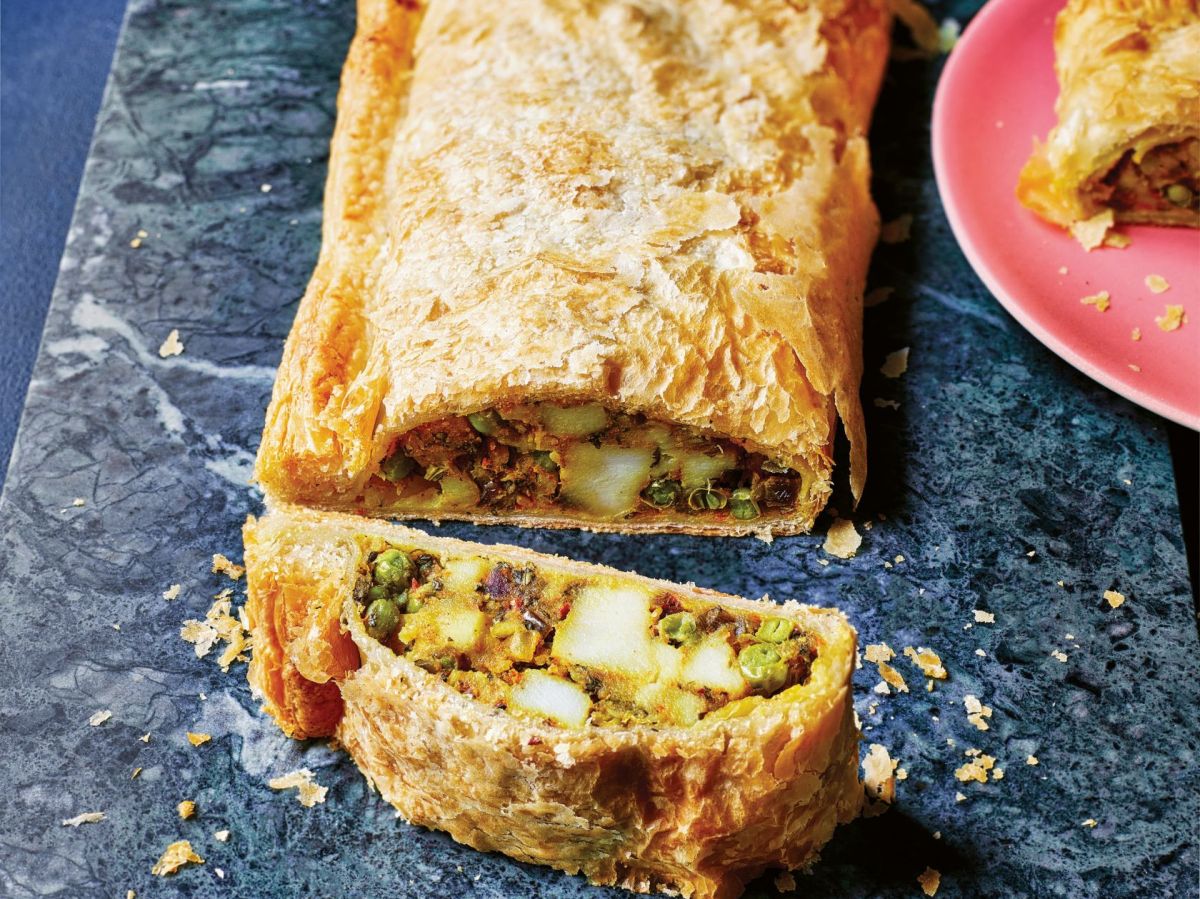British-Iranian chef Sabrina Ghayour reckons many Persian dishes can be made much simpler for the home cooks. “Lots of stuff is just shrouded in tradition, and tradition can go back generations to when they didn’t have electricity or didn’t have commercial cleaning of food. So, why is it essential to have four pots on the stove for a Persian stew? No, I’ve done it all in one pot and it works.”
Her latest cookbook, Persiana Easy, sticks to the Persian food we know and love her for (think brunch kuku, mutton raan and polow), alongside dishes from near and not so near regions, like Lebanese Hashweh next to Pakistani-style Biryani, Indian smashed crispy potato chaat and Egyptian koshari. But this time, stripped back and simpler.
“We all have less time, we all have less money, we all have people to feed – there’s so many reasons to keep things pared-down as much as possible. I’m certainly more pared-down [rather] than hunting after the authentic version of something.”
So many of her recipes are easier versions of classics, while others are entirely made up – take the hummus soup, for example. “I’m always trying to come up with soups because we’re a big soup house, especially my mother and mother-in-law, they live off soup.
Duck and pomegranate salad with honey pomegranate sauce
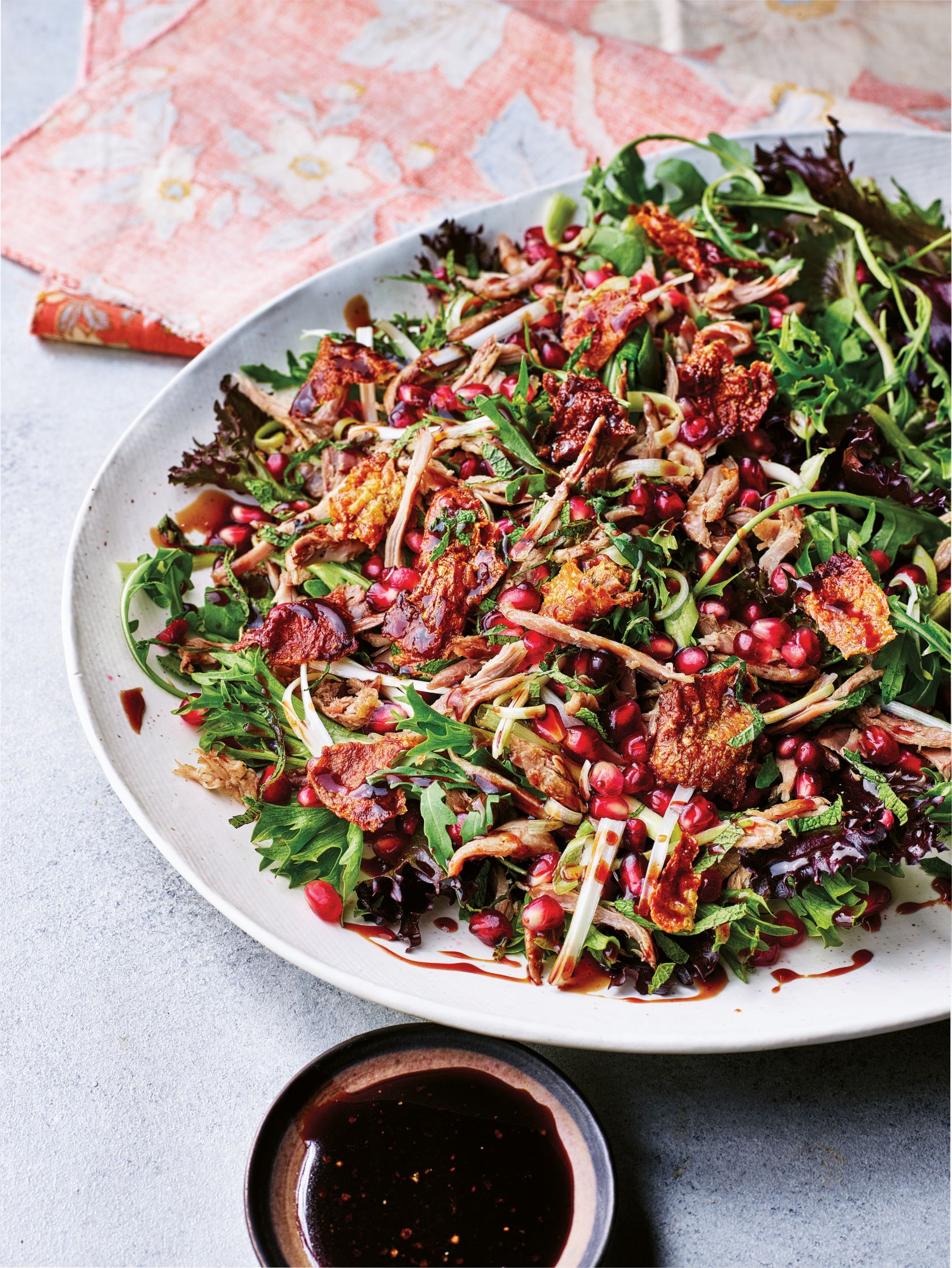
Ingredients
(Serves 2-4)
2 duck legs (about 460g total weight)
3 fat spring onions
100g mixed salad leaves
100g pack of pomegranate seeds, juice from the pack reserved for the dressing
Handful of mint leaves, rolled up tightly and thinly sliced into ribbons
Maldon sea salt flakes
Freshly ground black pepper
For the dressing:
2tbsp pomegranate molasses
2tsp runny honey
2tbsp olive oil
Juice from the pack of pomegranate seeds
Method
1. Preheat the oven to 190°C, 170°C fan (375°F), Gas Mark 5. Line a small baking tray with baking paper, and line a plate with a double layer of kitchen paper.
2. Place the duck legs on the lined tray, season the skin with salt and pepper, then roast for 1 hour.
3. Meanwhile, cut the white part of the spring onions into small batons, then slice very thinly into matchsticks. Place in cold water and set aside. Thinly slice the remaining green parts. Once cooked, remove the duck legs from the tray, leaving them on the baking paper, and set aside.
4. Increase the oven temperature to 240°C, 220°C fan (475°F), Gas Mark 9. Line the baking tray with fresh baking paper.
5. Carefully remove the skin from the duck without breaking it (use a knife to help you release it from the underside), place on the lined tray and roast for 10 minutes until extra crispy. Remove the duck skin and transfer to the paper-lined plate to drain.
6. Mix the dressing ingredients in a small bowl, season with salt and pepper and set aside. Shred the duck meat using your fingers or 2 forks.
7. To serve, arrange the salad leaves on a large platter, scatter over some of the pomegranate seeds and the green and white parts of the spring onions. Arrange the duck meat on top and season with salt and pepper, then add the remaining pomegranate seeds and the mint. Use a spoon to drizzle over the dressing. Finally, break up the duck skin into bite-sized pieces, add on top of the salad, then serve. This needs no other accompaniment.
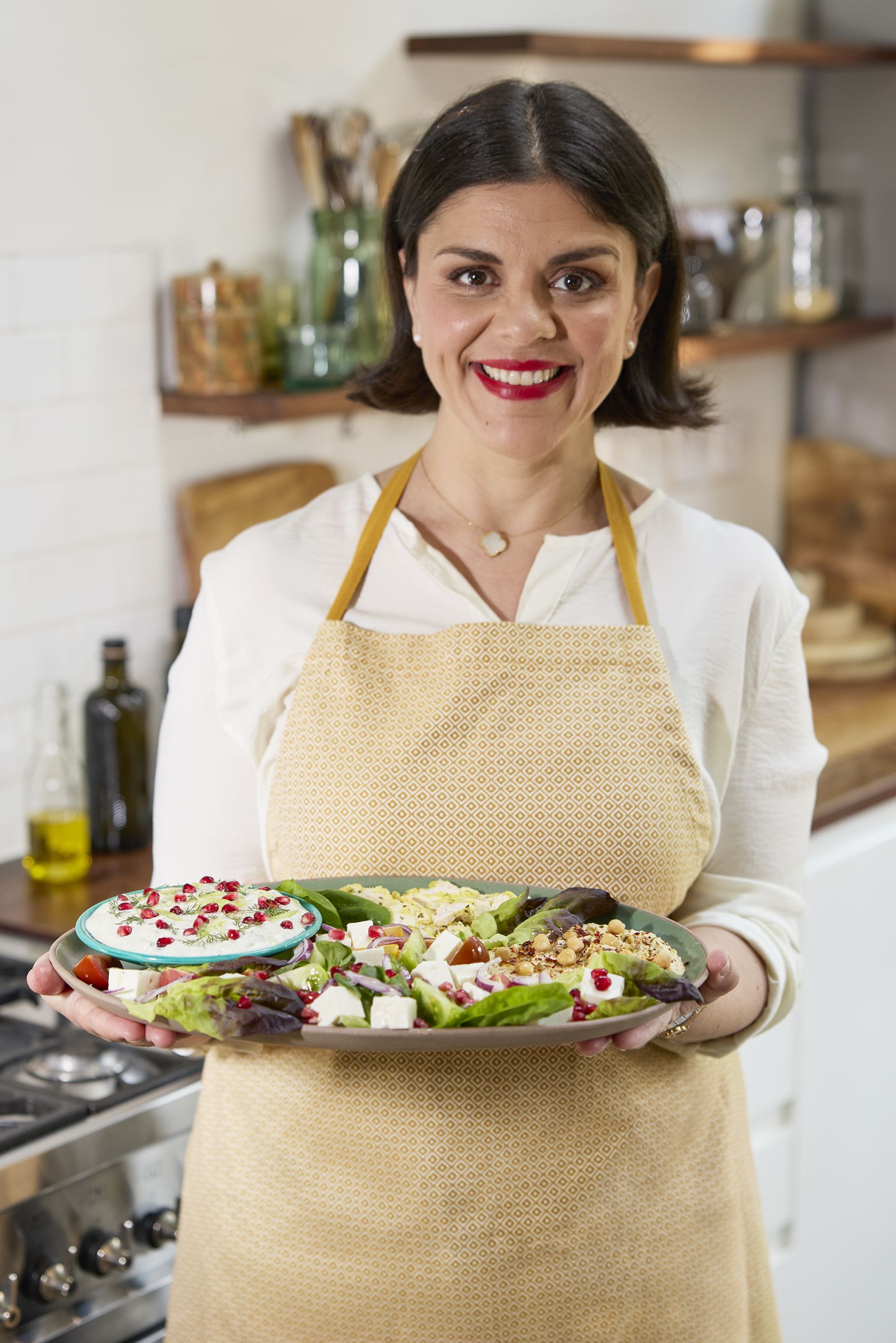
Spicy potato Wellington
Ingredients
(Serves 4-6)
2 generous handfuls of frozen peas
600g potatoes, peeled and left whole
1 small red onion, finely chopped
1 heaped teaspoon garlic granules
1 heaped teaspoon pul biber chilli flakes
1 heaped teaspoon ground turmeric
1tsp ground cumin
1 small packet (about 30g) of fresh coriander, finely chopped
1 x 320g ready-rolled puff pastry sheet (about 350 x 230mm)
Olive oil, to glaze (optional)
Maldon sea salt flakes
Freshly ground black pepper
Method
1. Put the frozen peas into a saucepan, pour over boiling water and leave to soak for about 10 minutes, then drain and set aside.
2. Cook the potatoes in a saucepan of boiling water for about 20 minutes until cooked all the way through. Drain and leave to cool. Once cool enough to handle, cut into 1cm (½ inch) cubes and place in a mixing bowl. Add the cooked peas, red onion, garlic granules, spices, a generous amount of salt and pepper and the coriander and mix everything together (don’t worry if you end up crushing some of the potatoes in doing so). Leave to cool completely.
3. When ready to cook, preheat the oven to 220°C, 200°C fan (425°F), Gas Mark 7. Line a large baking tray with baking paper and lay the puff pastry sheet on it.
4. Spoon out the potato mixture along one long side of the pastry, use your hands to form it into a sausage shape, then flatten it to about the width of your hand. Fold the other side of the pastry over the potato, then seal the pastry edges using a fork to press the edges together. You can score patterns into the pastry top if desired, but do it gently to avoid piercing the pastry.
5. Brush the pastry lightly with the olive oil to glaze, if using, then bake for 25 minutes until nicely browned and puffed up. Serve immediately.
Pineapple, spiced caramel and thyme tarte tatin
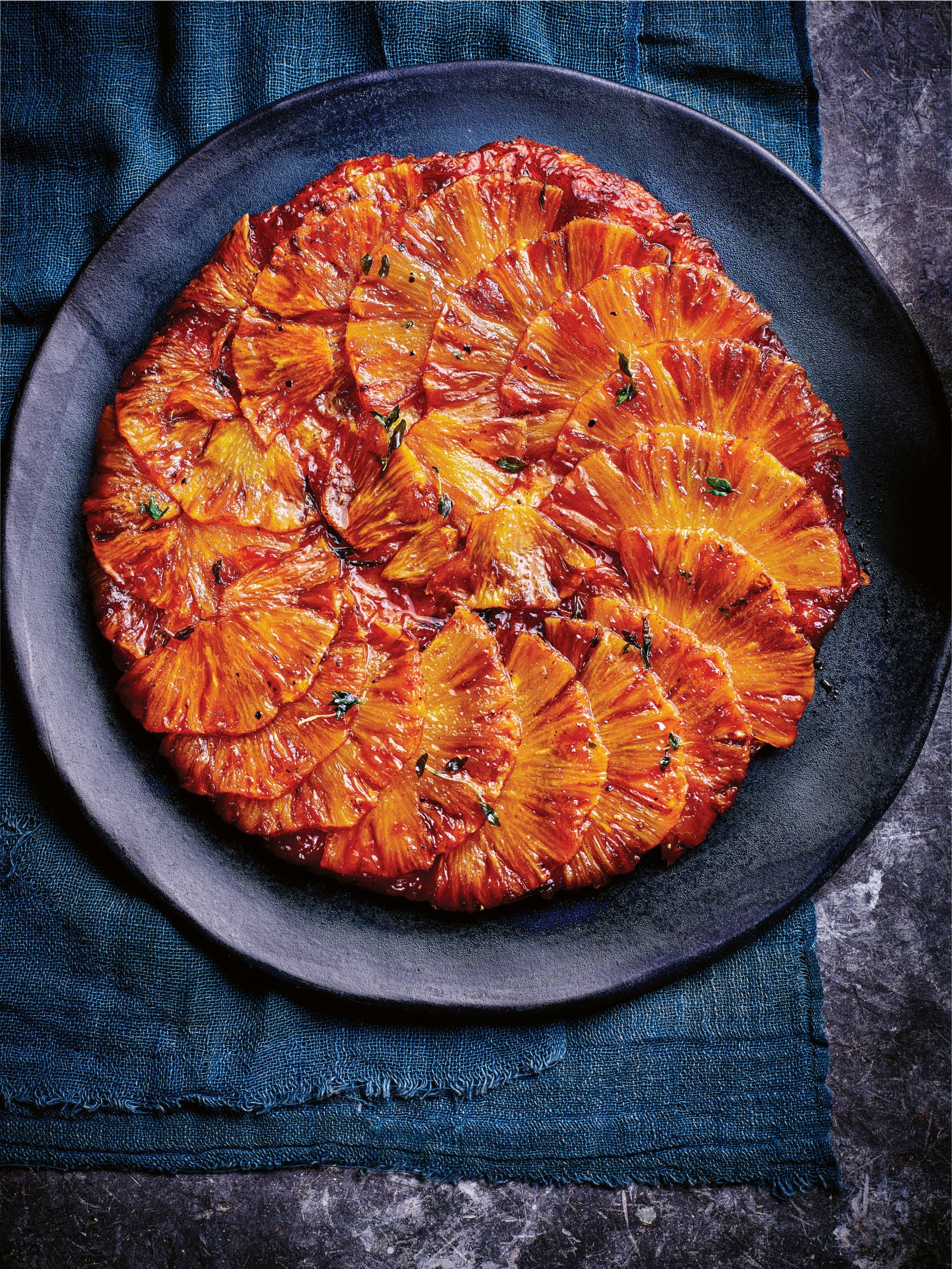
Ingredients
(Serves 6)
Plain flour, for dusting
500g block of puff pastry
150g caster sugar
½tsp ground cinnamon
½tsp freshly ground black pepper
Leaves from 4 sprigs of thyme
500g fresh pineapple flesh (not canned), thinly sliced
25g unsalted butter, cut into small pieces
Method
1. Preheat the oven to 200°C, 180°C fan, Gas Mark 6.
2. Select a large skillet or ovenproof frying pan for your tatin. Dust a clean work surface with a little flour and roll out the puff pastry into a circle slightly larger than your pan.
3. Place your pan over a medium heat, scatter the sugar evenly over the base and then sprinkle the cinnamon, pepper and thyme leaves evenly over the top. Once the pan heats up, swirl the sugar around in the pan (don’t stir) until it has dissolved and turns a deep caramel colour. Arrange the pineapple slices nicely in the pan (this will be the top of your tart), then add the butter around the pineapple, turn the heat up a little and cook for a few minutes until the pineapple starts to caramelise on all sides, shaking the pan occasionally to prevent the pineapple from sticking.
4. Remove the pan from the heat and place your pastry circle on top, tucking the edges carefully inside the sides of the pan all round, being careful not to burn your fingers on the hot caramel. Bake on the top shelf of the oven for 25–30 minutes until the pastry is puffed up and deeply golden brown.
5. Wearing oven gloves, remove the pan from the oven, then place a serving plate larger than the pan over it and carefully flip the pan and plate over together to turn the tart out on to the plate.
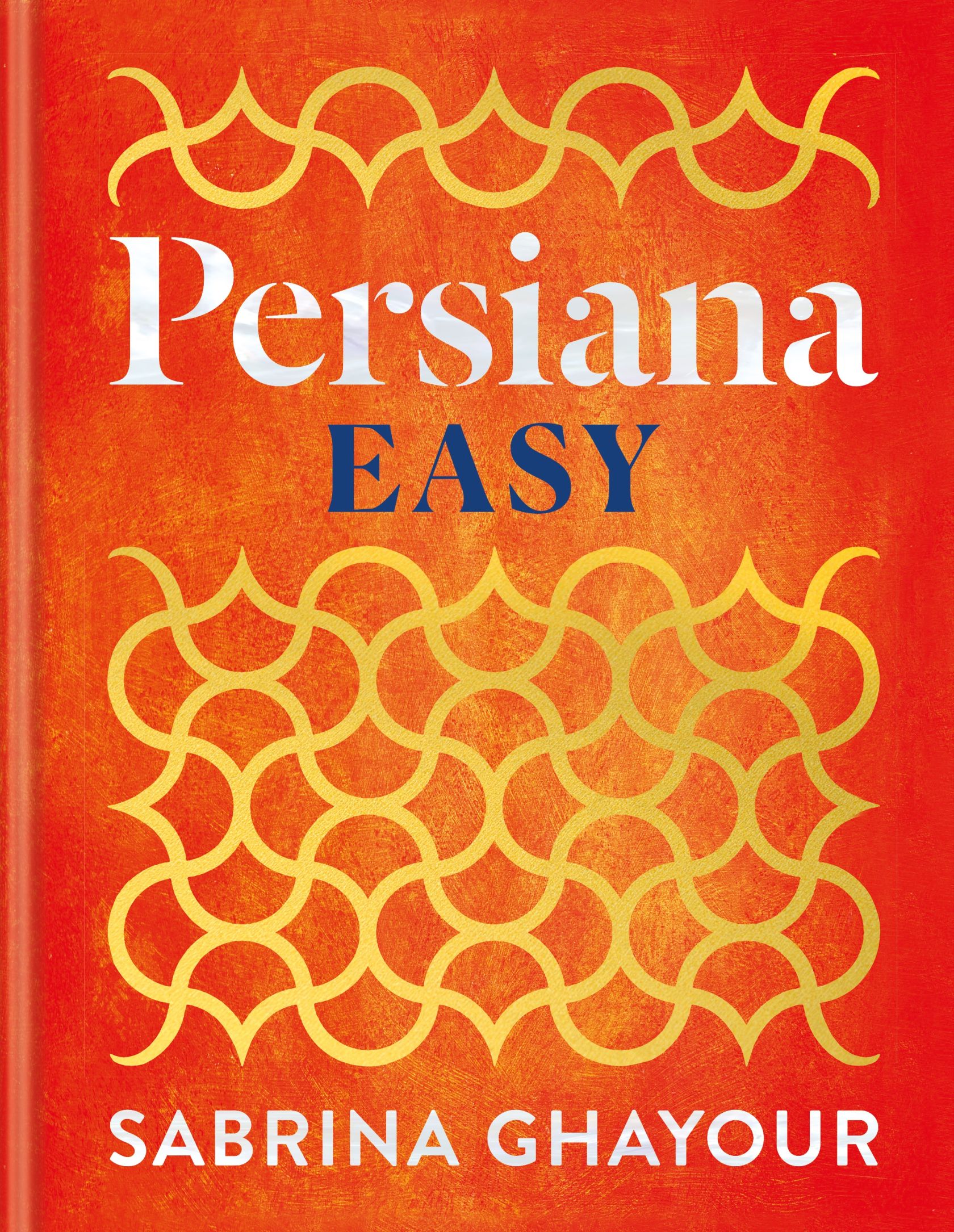
Persiana Easy by Sabrina Ghayour is published in hardback by Mitchell Beazley. Photography by Kris Kirkham.

